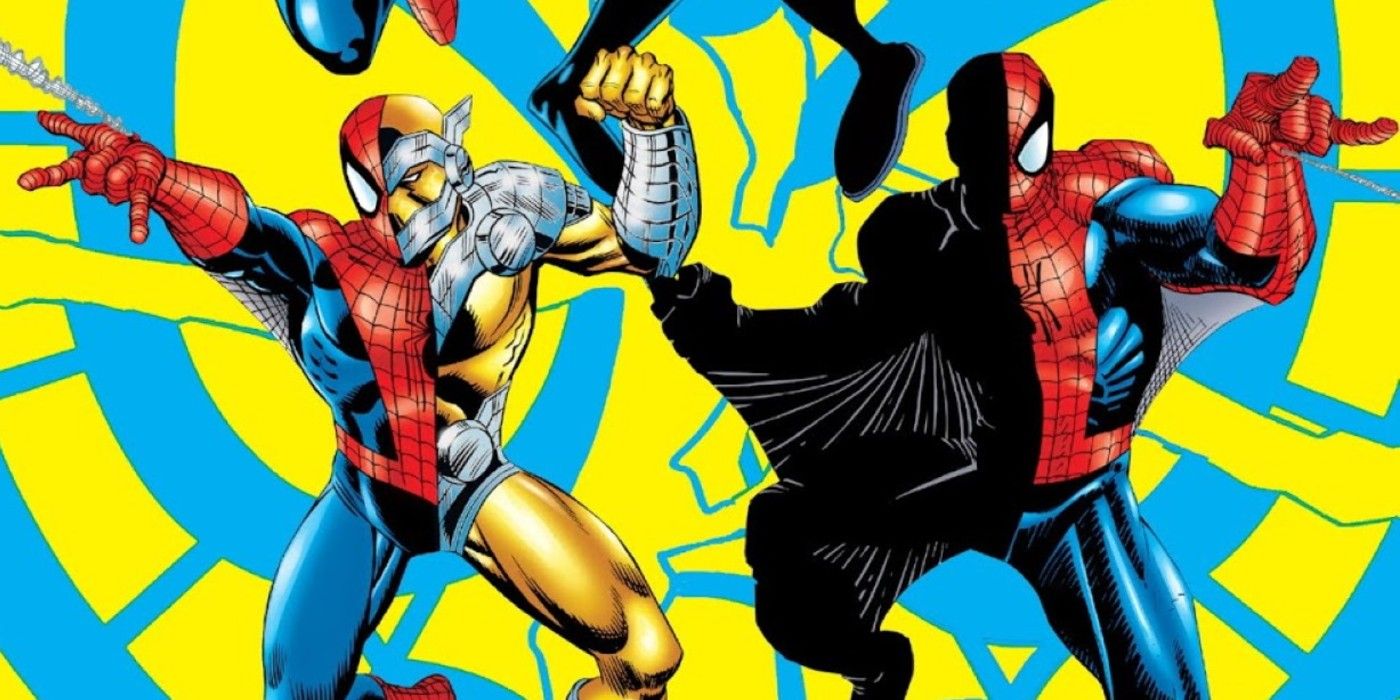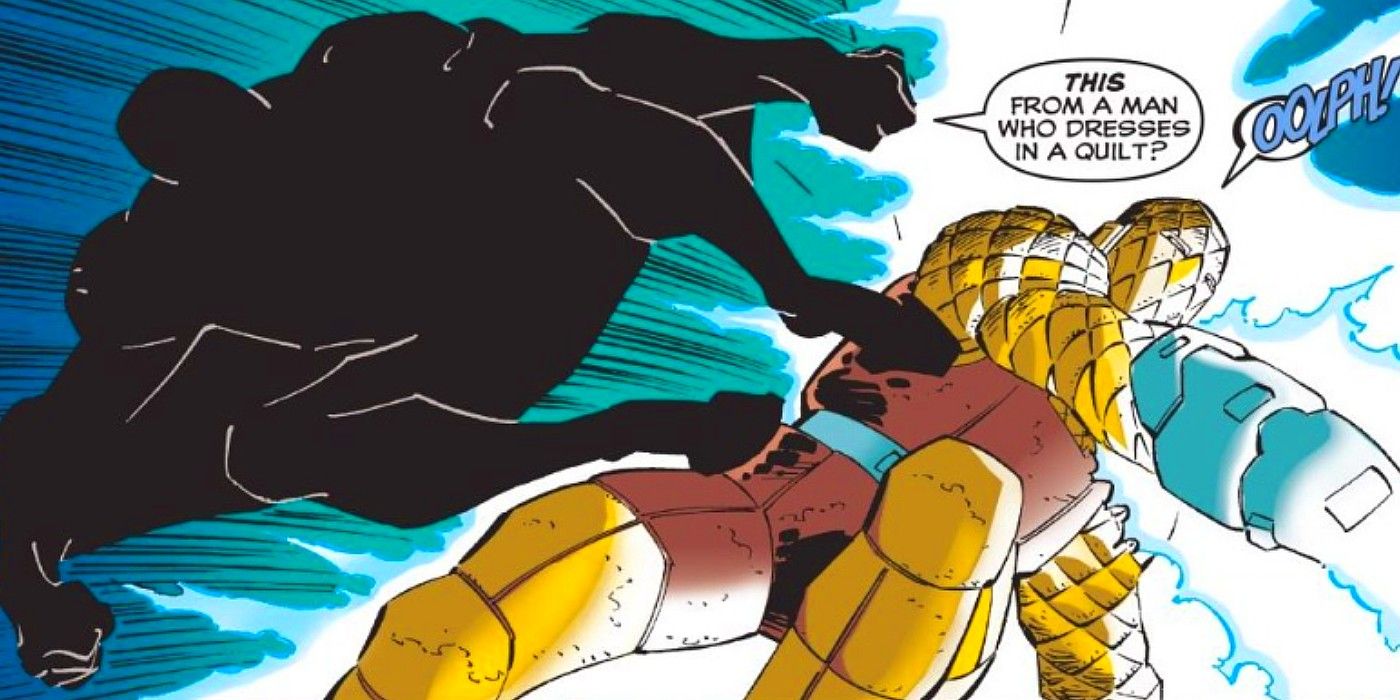If there's one feature of classic superhero stories that sets them apart from TV and movie adaptations, it's the genuine variety in costumes that a hero tends to accrue over their many adventures. At no point was this more notable than the 1990s - Hulk went grey, Superman turned electric blue, and most heroes tried out either leather or an armored costume - and Spider-Man was no exception.
Spider-Man’s most famous black costume went on to literally have a life of its own as half of the villain, later antihero, Venom. But there’s also a far less well-known costume Peter Parker wore almost fifteen years later when he posed as a new supervillain named Dusk - a costume that also created a new Marvel hero. An unnamed freedom fighter in a mysterious dimension wore it first, and a young heroine named Cassie St. Commons would later wear it as part of the Slingers team, spinning out of a Spider-Man storyline called "Identity Crisis".
In the Marvel Multiverse, there exists an otherworldly realm called the Negative Zone. First appearing in Fantastic Four #51, it was once a normal universe like ours, but it's so old that contraction has set in, and the laws of physics have begun to break down. It was here that Dusk started life as the leader of revolutionary fighters combating the despot Blastaar. Peter helped out, taking on the Dusk persona as his own, but when he was later unable to patrol the streets as Spider-man, the costume offered a novel solution.
This need for a secondary disguise is wrapped up in the Spider-Man storyline “Spider-Hunt” from 1998, in which Spidey found himself unable to patrol after a bounty was placed on his head. In each of the four ongoing Spider-Man comic-books of the time (Amazing, Spectacular, Sensational, and Peter Parker: Spider-Man), Peter adopted a unique persona, but none of these four new identities (including Hornet, Prodigy, and Ricochet) allowed him to disappear and become something so completely different as Dusk. A stoic villain instead of a wise-ass hero, clad in a black costume that melted magically into shadows, Dusk was intended to get close to underworld figures and solve the mystery that had Spidey on the run.
Ultimately, each of the four outfits: Ricochet, Hornet, Prodigy, and Dusk were replicated by the demon Mephisto in a sordid deal, which resulted in four new teenage heroes adopting the identities and their implied powers. This went from bad to worse when the new wearer of the Dusk costume, Cassie St. Commons, fell off a roof to her death. Mysteriously, she awoke the next day alive but changed. Forever after, she has been trapped in a kind of living death, though she's also used the powers this brought to help others.
While the 1990s is often lambasted as a period of poor creativity in which new characters failed to last, it is worth remembering the characters and costumes from the period. The Spider-Man "Identity Crisis" storyline allowed writers to deconstruct the character much like the major DC Comics storyline "Reign of the Supermen" from 1992, in which four new characters were presented as possible replacements for Superman. It's simultaneously a showcase of the elements of the Spider-Man character and of the wide variety of genres he engages with. Ricochet was all about Spidey's acrobatic glee, Prodigy was a traditional macho hero, Hornet let Peter foreground his gadgetry, and Dusk leaned into the darker elements of Spider-Man's crime stories. It's an example of the creativity present even in the most overlooked comics that cast-off Spider-Man costumes could each inspire their own complex heroes, and with links to both the wall-crawler and Marvel's fascinating Negative Zone, Dusk has plenty of stories in the past and future still to explore.


